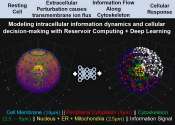Scientists develop 'Twitter' for cells
Computational biologists led by Prof. Yvan Saeys (VIB-UGent Center for Inflammation Research) developed a new bioinformatics method to better study communication between cells. This method, called NicheNet, helps researchers ...







